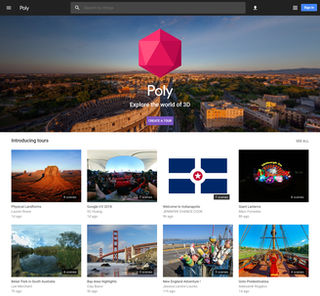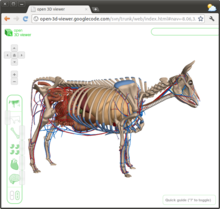
Adobe Flash is a discontinued multimedia software platform used for production of animations, rich internet applications, desktop applications, mobile apps, mobile games, and embedded web browser video players.
WebKit is a browser engine developed by Apple and primarily used in its Safari web browser, as well as all web browsers on iOS and iPadOS. WebKit is also used by the PlayStation consoles starting with the PS3, the Tizen mobile operating systems, the Amazon Kindle e-book reader, Nintendo consoles starting with the 3DS Internet Browser, and the discontinued BlackBerry Browser.
Google Video was a free video hosting service, originally launched by Google on January 25, 2005.

Cult of the Dead Cow, also known as cDc or cDc Communications, is a computer hacker and DIY media organization founded in 1984 in Lubbock, Texas. The group maintains a weblog on its site, also titled "[Cult of the Dead Cow]". New media are released first through the blog, which also features thoughts and opinions of the group's members.

Google Earth is a computer program that renders a 3D representation of Earth based primarily on satellite imagery. The program maps the Earth by superimposing satellite images, aerial photography, and GIS data onto a 3D globe, allowing users to see cities and landscapes from various angles. Users can explore the globe by entering addresses and coordinates, or by using a keyboard or mouse. The program can also be downloaded on a smartphone or tablet, using a touch screen or stylus to navigate. Users may use the program to add their own data using Keyhole Markup Language and upload them through various sources, such as forums or blogs. Google Earth is able to show various kinds of images overlaid on the surface of the Earth and is also a Web Map Service client. In 2019, Google revealed that Google Earth now covers more than 97 percent of the world, and has captured 10 million miles of Street View imagery.

Bing Maps is a web mapping service provided as a part of Microsoft's Bing suite of search engines and powered by the Bing Maps Platform framework which also support Bing Maps for Enterprise APIs and Azure Maps APIs. Since 2020, the map data is provided by TomTom, OpenStreetMap and others.

YouTube is an American online video-sharing platform headquartered in San Bruno, California, founded by three former PayPal employees—Chad Hurley, Steve Chen, and Jawed Karim—in February 2005. Google bought the site in November 2006 for US$1.65 billion, since which it operates as one of Google's subsidiaries.

Google Chrome is a web browser developed by Google. It was first released in 2008 for Microsoft Windows, built with free software components from Apple WebKit and Mozilla Firefox. Versions were later released for Linux, macOS, iOS, and also for Android, where it is the default browser. The browser is also the main component of ChromeOS, where it serves as the platform for web applications.
Freebase was a large collaborative knowledge base consisting of data composed mainly by its community members. It was an online collection of structured data harvested from many sources, including individual, user-submitted wiki contributions. Freebase aimed to create a global resource that allowed people to access common information more effectively. It was developed by the American software company Metaweb and run publicly beginning in March 2007. Metaweb was acquired by Google in a private sale announced on 16 July 2010. Google's Knowledge Graph is powered in part by Freebase.
Google Native Client (NaCl) is a discontinued sandboxing technology for running either a subset of Intel x86, ARM, or MIPS native code, or a portable executable, in a sandbox. It allows safely running native code from a web browser, independent of the user operating system, allowing web apps to run at near-native speeds, which aligns with Google's plans for ChromeOS. It may also be used for securing browser plugins, and parts of other applications or full applications such as ZeroVM.

Chromium is a free and open-source web browser project, primarily developed and maintained by Google. It is a widely-used codebase, providing the vast majority of code for Google Chrome and many other browsers, including Microsoft Edge, Samsung Internet, and Opera. The code is also used by several app frameworks.

Rockmelt is a discontinued proprietary social media web browser developed by Tim Howes and Eric Vishria based on the Google Chromium project, incorporating social media features such as Facebook chat, Twitter notifications and widgetised areas for other content providers such as YouTube and local newspapers. The Rockmelt web browser project was backed by Netscape founder Marc Andreessen. In April 2013, Rockmelt discontinued its desktop web browser, replacing it with a collaborative project bringing together social elements from various sources.

WebGL is a JavaScript API for rendering interactive 2D and 3D graphics within any compatible web browser without the use of plug-ins. WebGL is fully integrated with other web standards, allowing GPU-accelerated usage of physics, image processing, and effects in the HTML canvas. WebGL elements can be mixed with other HTML elements and composited with other parts of the page or page background.
Mozilla is a free software community founded in 1998 by members of Netscape. The Mozilla community uses, develops, publishes and supports Mozilla products, thereby promoting exclusively free software and open standards, with only minor exceptions. The community is supported institutionally by the non-profit Mozilla Foundation and its tax-paying subsidiary, the Mozilla Corporation.

Anatomography is an interactive website which supports generating anatomical diagrams and animations of the human body. The Anatomography website is maintained by the DBCLS non-profit research institute located at the University of Tokyo. Anatomical diagrams generated by Anatomography, and 3D polygon data used on the website, are freely available under the Creative Commons Attribution-ShareAlike license.

Google Chrome Experiments is an online showroom of web browser based experiments, interactive programs, and artistic projects. Launched on March 1, 2009, Google Chrome Experiments is an official Google website that was originally meant to test the limits of JavaScript and the Google Chrome browser's performance and abilities. As the project progressed, it took the role of showcasing and experimenting latest open-source web-based technologies, such as JavaScript, HTML, WebGL, Canvas, SVG, CSS, and some others. All the projects on Chrome experiments are user submitted and are made using open source technologies. As of February 24, 2015, there were 1,000 different Chrome projects posted on the website.

Sketchfab is a 3D asset website used to publish, share, discover, buy and sell 3D, VR and AR content. It provides a viewer based on the WebGL and WebXR technologies that allows users to display 3D models on the web, to be viewed on any mobile browser, desktop browser or Virtual Reality headset.

Poly was a website created by Google for users to browse, distribute, and download 3D objects. It was launched in 2017 and intended to allow creators to easily share and access 3D objects. It featured a free library containing thousands of 3D objects for use in virtual reality and augmented reality applications. On December 2, 2020, it was announced that Poly would be shutting down on June 30, 2021, with the ability to upload 3D models to be suspended on April 30, 2021.










